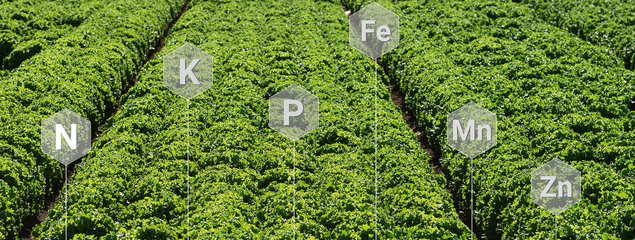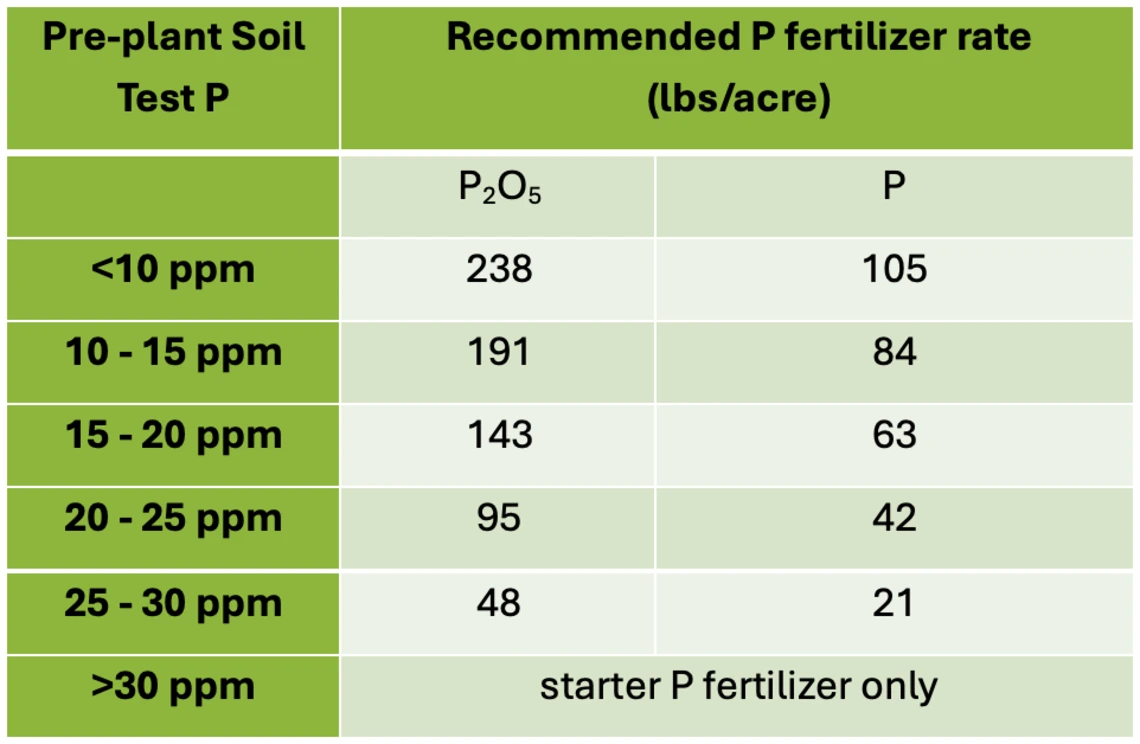
Improve Plant Nutrition
Fertilizer Guidelines for Vegetable Crops in Arizona
Crop Fertilizer Guidelines (3)
Celery (3.4)
Celery is a new crop in the Lower Colorado River Region (Figure 3-4-1). The introduction of this crop into the area largely resulted from the loss of production acreage in Oxnard, California. Celery production involves transplanting seedlings procured from nurseries in double rows on 40 or 42 inch beds. Stands are established through irrigation with sprinklers or furrows. Above ground accumulation of nitrogen (N) in plant tissues of celery crop can range from 180-250 lbs/acre (11 12, 13). Removal in the harvested crop will vary by the extent of trimming and the packaging method and can range from 130-170 lbs N/acre.
Often the pre-plant N requirement of celery is met with the application of monoammonium phosphate (MAP), which is primarily used as pre-plant phosphorous source. However, if pre-plant soil test nitrate-N is less than 10 ppm and MAP rates are less than 200 lbs/acre (equivalent to 104 lbs P2O5/acre), then early season application of N at a rate of about 10-40 lbs/acre could be required and should be applied pre-plant or with the sprinkler water (Table 2-1-1).
Most of the in-season N fertilizer requirement of celery is applied by side-dress following stand establishment and during cultivation. The N fertilizer needs to be applied if the measured soil test nitrate-N level is under a minimum threshold of 30 ppm, the N fertilizer requirement being equal to the difference between the minimum threshold soil nitrate-N and the measured soil test nitrate-N level. Approximately 4 lbs of N/acre need to be applied to raise the soil test nitrate-N level by 1 ppm. Celery may sometimes need a second side-dressed application of N fertilizer or late season water run. A second in-season N application could be beneficial when the soil test N level is 20 ppm nitrate-N.
There is a small acreage of drip irrigated celery in Arizona. Drip irrigation allows high frequency, low dose irrigation through the cropping season. Thus, N fertilizer application rates can be spread over the season in a manner that closely matches crop N requirements, if fertilizer is applied through fertigation. Further discussion on this topic can be found in Section 4.3.
Celery crops show response to Olsen P soil phosphorus levels of up to 30 ppm (Table 3-4-1). Band application of phosphorous (P) fertilizer is not practiced for celery because of the mechanical soil disturbance during the transplanting of seedlings. However, strip applications to seedbeds and power mulching can be used to apply P fertilizer. This practice could reduce the P required by 25% compared to the traditional broadcast method. Celery seedlings typically exhibit signs of severe shock following transplanting, which appears to be symptomatic of crop nutrient deficiencies that limit growth. However, often crop growth resumes in three to four weeks following establishment of roots.
Celery has extremely high demand for potassium (K) fertilizer, with above-ground accumulation of K at maturity reaching up to 500 lbs/acre (83). Remarkably, to date, celery crops are grown in the region without the application of K fertilizer, and to the best of author’s knowledge, no K limitations have been observed. Celery acreage is relatively small at present, and it is generally not produced on the same land in succeeding seasons. This may partially explain why soil K depletion has not occurred to date. Nonetheless, it is prudent to test the soils for K prior to each cropping season and verify that AA K levels exceed a threshold of 200 ppm. In addition, celery leaf K concentrations should also be greater than 4% (Section 4.3). Since K concentrations in conductive tissue are often confounded by background sodium levels, concentrations of K in leaves were preferred to those of petioles (14).
The only micronutrient that may be needed as a fertilizer for celery production in Arizona is zinc (Zn). The Zn fertilizer guidelines, developed based on a DPTA soil tests, are shown in Section 2.5 for all vegetable cropping systems, including celery. The leaf tissue Zn concentrations might also be monitored and should remain above 25 ppm (Section 4.3).

Figure 3-4-1
Celery field in Yuma Valley

Table 3-4-1
Celery P fertilizer guidelines by pre-plant Olsen P soil test.

